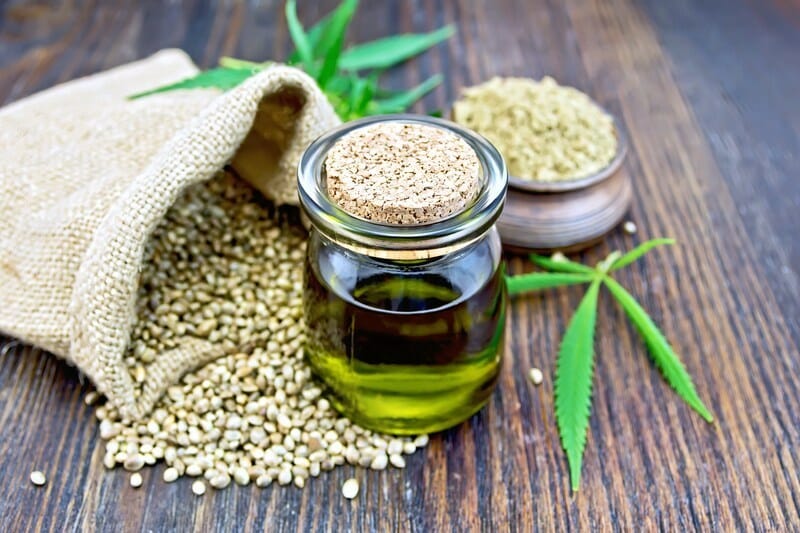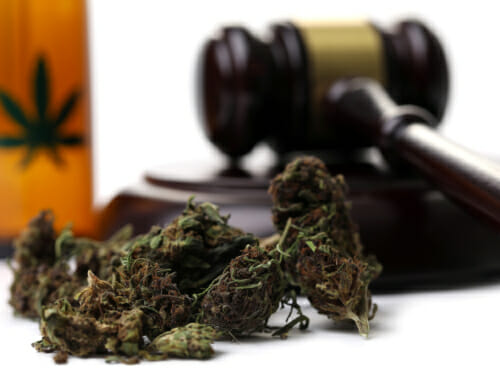On Thursday, October 31, 2019 the United States Department of Agriculture (USDA) officially published their interim final rule regulating the United States domestic hemp production program. Developed following the passage of the 2018 Farm Bill, these long-awaited rules lay the foundation for a promising industry. The aim of these rules is to create a consistent regulatory framework around hemp production throughout the United States. It is important to note from the outset that these new rules do not affect industrial hemp that was or is being cultivated under the 2014 Farm Bill programs. Additionally, for the next sixty days, the USDA is soliciting comments and feedback on the proposed rules. In order to comment, follow this link, and click “Comment Now” on the top right of the webpage.
OVERVIEW:
The Final Interim Rules published on October 31st, outline provisions for the USDA to approve plans submitted by States and Indian Tribes for the domestic production of hemp. The Final Interim Rule also establishes a Federal plan for producers in States or territories of Indian Tribes that do not have their own USDA-approved plan. These State and Territory plans would need to include provisions for:
- Maintaining information on the land where hemp is produced,
- Testing the levels of delta-9 tetrahydrocannabinol (THC),
- Disposing of plants not meeting necessary requirements,
- Licensing requirements, and
- Ensuring compliance with the requirements of the new program.
The 2018 Farm Bill granted regulatory authority of domestic hemp production to the State departments of agriculture, Tribal governments, and the USDA. States and Tribes must submit to the USDA plans which include provisions for maintaining information regarding the land on which hemp is produced, for testing the levels of THC, for disposal of plants that do not meet necessary requirements, and for procedures to ensure compliance with the requirements of the new program. State and Tribal Plans must be approved by the USDA. The proposed rule outlines requirements by which the USDA would approve plans submitted by States and Tribal governments for oversight of hemp production. The 2018 Farm Bill also directs the USDA to develop a plan for use by hemp producers in States or Tribes where no State or Tribal Plan has been approved and which do not prohibit the cultivation of hemp. These actions will promote consistency in rules governing the legal production of hemp across the country.
IMPORTANT SPECIFICS:
While the Final Interim Rules are roughly one hundred and sixty pages, some of the important and interesting portions are discussed here. Two of the most important concepts to be aware of are, the concept of “measurement of uncertainty” or “MU” as well as the Final Interim Rules’ position on the interstate transportation of hemp.
First, the concept of “measurement of uncertainty” is defined as, “the parameter, associated with the result of a measurement, that characterizes the dispersion of the values that could reasonably be attributed to the particular quantity subject to measurement.” For example, if a laboratory reports a result as 0.35% with a measurement of uncertainty of +/− 0.06, the distribution or range is 0.29% to 0.4%. Because 0.3% is within that distribution or range, the sample, and the lot it represents, is considered hemp for the purpose of compliance with the requirements of State, Tribal, or USDA hemp plans. Therefore, theoretically, even if a lot of hemp is tested and is slightly above the 0.3% THC limit, it may still be viable. However, another important factor relating to allowable THC is the requirement that a lot of hemp must be harvested within fifteen days of the sample taken to be tested. As the proposed regulation states, “Within 15 days prior to the anticipated harvest of cannabis plants, a Federal, State, local, or Tribal law enforcement agency or other Federal, State or Tribal designated person shall collect samples from the flower material from such cannabis plants for delta-9 tetrahydrocannabinol concentration level testing. . .”
In addition to the measurement of uncertainty testing requirements, the proposed regulation addresses interstate transportation of hemp. While the rules allow States and Indian Tribes to enact more stringent rules than the federal government, the rules explicitly state that States and Tribes shall not prevent legally produced hemp from being transported through their state or territory. Therefore, any fears of producers transporting hemp through States that have, or will, outlaw hemp should be quelled.
STATE AND INDIAN TRIBE PLANS:
The State and Indian Tribe Plans would apply if either entity wanted to have primary regulatory authority over the production of hemp in that State or territory. State or Tribal plans must be submitted to the USDA and approved prior to implementation. However, while States and Tribes are allowed to develop their own hemp production plans, the individual plans must include certain requirements as laid out in these rules in order to be approved by the USDA.
Some of the requirements include:
- Plans containing a process by which relevant information regarding the land used for hemp production in their jurisdiction is collected and maintained;
- State and Tribal plans must incorporate procedures for sampling and testing hemp to ensure the cannabis grown and harvested does not exceed the acceptable hemp THC level;
- State and Tribal plans are also required to include procedures for ensuring effective disposal of plants produced in violation of this program;
- State and Tribal plans must include compliance procedures to ensure hemp is being produced in accordance with the requirements of this program; and
- State and Tribal plans also must contain procedures for reporting specific information to USDA.
DEPARTMENT OF AGRICULTURE PLAN:
If a State of Indian Tribe decides they wish to forego establishing a unique hemp production plan, any producers in the state or territory will be governed by the default USDA rules. While the requirements are materially the same to what is required to be in the State plans, the USDA plans may apply to large portions of the county.
To produce hemp under the USDA plan, producers must apply for and be issued a license from the USDA. The USDA will begin accepting applications thirty days after the effective date of this interim rule. For the first year after the USDA begins accepting applications, applications can be submitted any time. For all subsequent years, license applications and license renewal applications must be submitted between August 1 and October 31. The application will require contact information such as:
- name;
- address;
- telephone number; and
- email address (if available).
If the applicant represents a business entity, and that entity will be the producer, the application will require:
- the full name of the business;
- address of the principal business location;
- full name and title of the key participants on behalf of the entity;
- an email address if available; and
- An EIN number of the business entity.
Additionally, all applications must be accompanied by a completed criminal history report. If the application is for a business entity, a completed criminal history report must be provided for each key participant. According to the final interim rules, a “key person” is one who has,
a direct or indirect financial interest in the entity producing hemp, such as an owner or partner in a partnership. . . also includes persons in a corporate entity at executive levels including chief executive officer, chief operating officer and chief financial officer. This does not include other management positions like farm, field or shift managers.
USDA HEMP PRODUCER LICENSES:
If approved through the USDA process, a hemp producer license will be issued. Licenses are not transferrable in any manner. Licenses do not renew automatically and must be renewed every three years. An applicant whose application has been approved will not be considered a licensed producer under the USDA plan until the applicant receives their producer license. Additionally, applications for renewals will be treated with the same scrutiny as initial applications for licenses. Licenses will be valid until December 31 of the year that is at least three years after the license is issued. This date is not tied to the harvest and planting season, rather it is tied to the window for applications (Aug. 1 – Oct. 31) and the sixty days for the USDA to make a decision. For example, if a producer applies for a license August 1, 2020 and is granted a license on September 15, 2020, the license would expire December 31, 2023.
COMPLIANCE:
In order to ensure that hemp producers are not actually growing marijuana (cannabis with higher that 0.3% THC), the USDA will conduct random audits of licensees to verify hemp is being produced in accordance with these provisions. According to the proposed final interim rules, the USDA will only conduct audits of each licensee once in a three-year period. Licensees who are found to have a negligent violation will be subject to a corrective action. A negligent violation includes:
- Failure to provide a legal description of the land on which the hemp is produced;
- Not obtaining a license before engaging in production; or
- Producing plants exceeding the acceptable hemp THC level.
SUSPENSION OF A USDA LICENSE:
A USDA hemp producer license may be suspended if the USDA or its representative receives credible information that a licensee has either:
- Engaged in conduct violating a provision of this program; or
- Failed to comply with a written order from the AMS Administrator related to a negligent violation of this program.
Any producer whose license has been suspended shall not handle or remove hemp or cannabis from the location where hemp or other cannabis was located at the time when the USDA issued its notice of suspension without prior written authorization from USDA. Any person whose license has been suspended shall not produce hemp during the period of suspension. A suspended license may be restored after a waiting period of one year. A producer whose license has been suspended may be required to comply with a corrective action plan to fully restore their license. A USDA license shall be immediately revoked if the licensee:
- Pleads guilty to, or is convicted of, any felony related to a controlled substance;
- Made any materially false statement with regard to this program to USDA or its representatives with a culpable mental state greater than negligence; or
- Was found to be growing cannabis exceeding the acceptable hemp THC level with a culpable mental state greater than negligence or negligently violated the provision of this program three times in five years.
APPEALS:
The proposed final interim rules allow for applicants to appeal decisions denying a license to the Agriculture Marketing Service (AMS) Administrator. Decisions that can be appealed are, denials of:
- Initial Licenses;
- License renewals;
- License suspensions; or
- License revocations.
It is important to remember that appeals must be submitted in writing and received within 30 days of the denial.
HEMP IN NEVADA:
While the true effect on Nevada’s hemp industry is not yet known, the Nevada Department of Agriculture (NDA) is working to submit their own program plan to the USDA in order to regulate Nevada hemp production on the state level. According to a slideshow presentation given by the NDA on January 30, 2019, titled “NDA Certificate Holders Program Overview” and posted on their website, the NDA is working on submitting a plan to the USDA. One of the positives for the NDA is the fact that Nevada has had a hemp program for multiple years and there is already a frame to build off of.
The design of Nevada’s current hemp certification and regulation processes conform well with requirements from the USDA in their new interim rules. For example, the Nevada Department of Agriculture currently requires site inspections of hemp crops fifteen days after planting as well as fifteen days prior to harvest. This requirement, while more stringent than the proposed USDA rule, meets the requirement set forth in the USDA rules. The USDA is proposing a requirement to collect and test hemp fifteen days prior to harvest. Additionally, the NDA has an established process for licensing seed producers. In their proposed rules, the USDA explicitly stated that regulation of hemp seed would fall to the individual states. Therefore, since the NDA already has a seed producer application procedure in place, it would make sense if the NDA decided to keep the same program.
CONCLUSION:
While there is a lot more packed into the one hundred and sixty pages of the proposed final interim rules, these are some of the important topics to be aware of. The USDA is currently soliciting comments regarding the final interim rules and if you would like to provide feedback to the Department, follow this link, and click “Comment Now!” on the top right of the webpage. Comments can also be submitted via the Federal eRulemaking portal at www.regulations.gov. Additionally, comments may also be filed with Docket Clerk, Marketing Order and Agreement Division, Specialty Crops Program, AMS, USDA, 1400 Independence Avenue SW, STOP 0237, Washington, DC 20250-0237; or Fax: (202) 720-8938. All comments should reference the document number and the date and page number of this issue of the Federal Register and will be made available for public inspection in the Office of the Docket Clerk during regular business hours or can be viewed at: www.regulations.gov. All comments submitted in response to this rule will be included in the record and will be made available to the public. The comment period will close on December 30, 2019. After reviewing and evaluating the comments, the USDA will draft and publish a final rule within two years of the date of publication.





